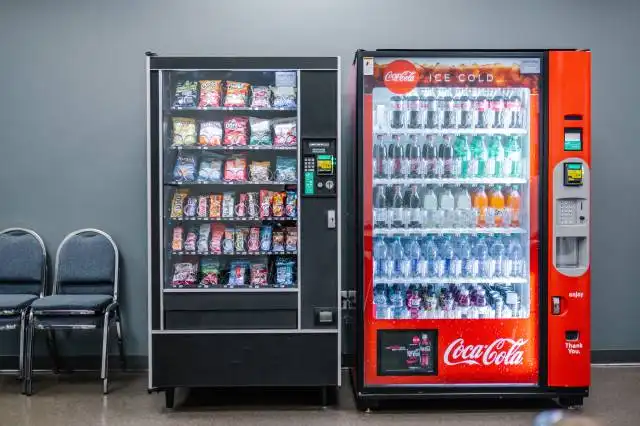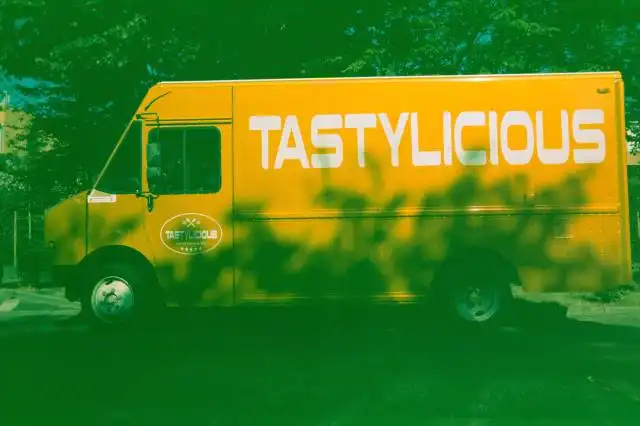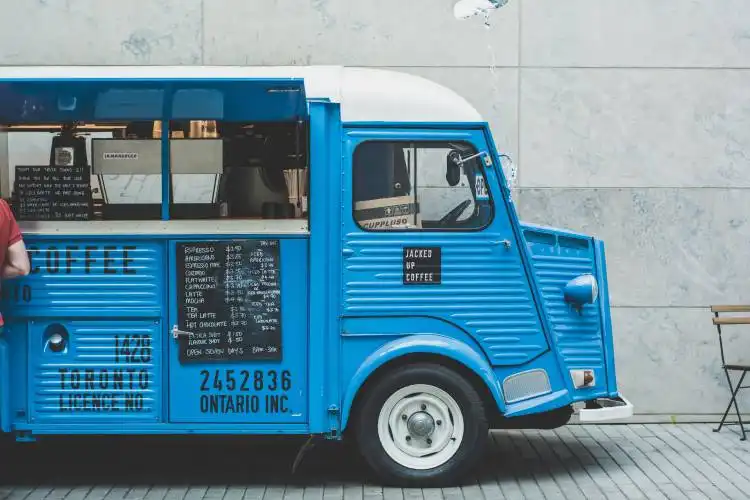Start a Restaurant Delivery Service
A Tasty Entrepreneurial Opportunity: Your Own Restaurant Delivery Service
| Updated


RESTAURANT DELIVERY SERVICE
Ever thought of operating your very own restaurant delivery service? It's essentially an errand-running enterprise with a delicious twist! This business is all about picking up patrons' preferred delicacies from a multitude of restaurants and promptly delivering them right to their doorstep. This type of business thrives on speed, accuracy, and a knack for keeping meals hot – the perfect recipe for the budding entrepreneur who doesn't mind a side of hustle with their main course!
Jump to Business Plan
RELATED BUSINESS IDEAS
Browse ALL Rental & Delivery Services Business Ideas
Discover Your Perfect Domain
Unlock the door to your online success with our hand-picked selection of premium domain names. Whether you're starting a new venture or rebranding an existing one, the right domain can set the tone for your digital presence. Browse through our curated list, each with its unique potential to enhance your brand's visibility and credibility.
RESTAURANT DELIVERY MINI BUSINESS PLAN
This a quick reality check to help you identify the strengths and weaknesses of your business concept before you dive in.
Expected Percent Margin:
- Gross Margin: 20-30%
- Net Profit Margin: 5-10%
Earnings Expectations:
- Daily Earnings: $100 - $500
- Weekly Earnings: $700 - $3,500
- Monthly Earnings: $3,000 - $15,000
- Annual Earnings: $36,000 - $180,000
Actions to Hit Those Numbers:
Set Up Business:
- Initial Investment: Around $5,000 to $10,000 to setup software, establish partnerships, and marketing.
- Partnerships: Partner with a variety of local restaurants to diversify offerings.
Marketing and Customer Acquisition:
- Social Media: Make daily posts about different restaurant deals on social media.
- Local Marketing: Spend around $500 - $1,000 monthly on local ads or partnerships with food bloggers or influencers.
Operations and Logistics Management:
- Staffing: At least 5-10 delivery agents depending on the size of the operation area.
- Efficient Routing: Use route-planning software to optimize deliveries, and save time & fuel cost.
Cost Control:
- Commission Management: Work on a commission basis with restaurants; between 10% and 30% of the order price is typical.
Business Operations:
- Hours of Operation: Operate at least 10-12 hours a day to cover all mealtimes.
- Order Volume: Aim for 20-50 orders per day depending upon the average order value.
These are generalized estimations and can vary depending on location, economic conditions, and individual business strategies. Always consult with a financial advisor for personalized advice.
NOT WHAT YOU HAD IN MIND? Here are more ideas



Browse ALL Rental & Delivery Services Business Ideas
Grab Your Business Website Name
Before you get caught up in the whirlwind of setting up your business, invest in a domain name. It's a small but significant step that lays the foundation for your brand and makes it easier for customers to find and trust you. Just like you wouldn't build a house without securing the land first, don't build a business without securing your domain name.
"Why? Can't that wait?" Here's why it shouldn't
Step 1: Determine if the Business is the Right Endeavor
Breakdown of startup expenses
Before starting a restaurant delivery service, it is important to understand the startup costs associated with the business. This includes the cost of the restaurant space, equipment, and staff. Additionally, the cost of marketing, insurance, and licenses should be taken into account. It is also important to consider the cost of food and supplies, as well as the cost of delivery vehicles. Finally, the cost of technology, such as a website or app, should be considered.
Breakdown of ongoing expenses
In addition to the startup costs, it is important to understand the ongoing expenses associated with running a restaurant delivery service. This includes the cost of food and supplies, staff wages, and delivery fees. Additionally, the cost of marketing, insurance, and licenses should be taken into account. It is also important to consider the cost of technology, such as a website or app, as well as the cost of maintenance and repairs. Finally, the cost of energy, such as electricity and gas, should be taken into account.
Examples of ways to make money
There are several ways to make money with a restaurant delivery service. One way is to charge a delivery fee for each order. Additionally, restaurants can charge a markup on the food items they offer. Restaurants can also offer discounts or promotions to encourage customers to order more often. Finally, restaurants can partner with other businesses to offer additional services, such as catering or meal kits.
Step 2: Name the Business
Choosing the right name for your restaurant delivery service is essential to the success of your business. You want to pick a name that is memorable, easy to spell, and reflects the type of food you will be delivering. It should also be unique and stand out from other restaurants in the area. Additionally, it should be easy to find online and on social media. When deciding on a name, consider the following tips:
Brainstorm a list of potential names. Start by brainstorming a list of potential names that reflect your restaurant’s concept and mission. Think of words that evoke the type of food you will be serving, the atmosphere you want to create, and the area you will be serving.
Do a search for the name. Once you have a list of potential names, do a search online to make sure the name isn’t already taken. You don’t want to choose a name that is already being used by another restaurant.
Ask for feedback. Ask friends and family for their opinion on the names you’ve chosen. They may have helpful insights or ideas that you hadn’t considered.
Choose a domain name. Once you’ve chosen a name, you’ll need to purchase a domain name for your website. Make sure the domain name is available and easy to remember.
Register your business name. Once you’ve chosen a name, you’ll need to register it with the state. This will ensure that no one else can use the same name for their business.
By following these tips, you can choose a name for your restaurant delivery service that is unique, memorable, and reflects the type of food you will be delivering. With the right name, you can create a strong brand identity that will help your business stand out from the competition.
Step 3: Create a Business Plan
Creating a business plan is essential for any business, especially a restaurant delivery service. The plan should include a mission statement, a description of the services offered, a market analysis, a competitive analysis, a marketing plan, an operational plan, a financial plan, and a management plan.
The mission statement should explain the purpose of the business and what it hopes to accomplish. The services offered should include a description of the type of food, delivery times, and any other services the restaurant delivery service will provide. The market analysis should include an overview of the restaurant delivery industry, the target market, and the potential customer base. The competitive analysis should include an overview of the competition, their strengths and weaknesses, and how the restaurant delivery service will differentiate itself.
The marketing plan should include a description of the marketing strategies and tactics that will be used to reach the target market. This could include advertising, public relations, and social media. The operational plan should include the steps needed to start the business, such as obtaining permits and licenses, hiring staff, and setting up the delivery system. The financial plan should include a breakdown of startup costs, ongoing expenses, and potential revenue streams. Finally, the management plan should include a description of the roles and responsibilities of the management team, as well as a timeline for achieving the goals of the business.
Step 4: Obtain Licenses and Permits
Before starting a restaurant delivery service, it is important to understand the types of licenses and permits that are necessary to operate the business. Depending on the state, the types of licenses and permits needed may vary. Generally, a business license, a food service license, and a health permit are required. Additionally, any special permits needed for delivery vehicles must be obtained.
How to obtain licenses and permits
In order to obtain the necessary licenses and permits, the business owner must contact their local government offices. The local government offices will provide the business owner with the necessary paperwork to apply for the licenses and permits. The business owner must fill out the paperwork and submit it to the local government offices. Once the paperwork is submitted, the local government offices will review the application and issue the necessary licenses and permits.
Cost of licenses and permits
The cost of the licenses and permits will vary depending on the state and the type of business. Generally, the cost of the licenses and permits can range from a few hundred dollars to a few thousand dollars. Additionally, the business owner may need to pay a fee to renew the licenses and permits annually.
Benefits of obtaining licenses and permits
Obtaining the necessary licenses and permits is important for the business owner to ensure that the business is operating legally. Additionally, having the necessary licenses and permits can help the business owner to gain credibility with customers and potential investors. Furthermore, having the necessary licenses and permits can help the business owner to avoid any legal issues that may arise from operating the business without the proper licenses and permits.
Step 5: Find a Location
Finding the right location for a restaurant delivery service is an important step in the process. It is important to consider factors such as the size of the space, the cost of rent, the proximity to customers, and the availability of parking. Additionally, the location should be easily accessible for customers and delivery drivers.
Research local zoning laws
It is also important to research local zoning laws to ensure that the location is suitable for a restaurant delivery service. Zoning laws can vary from city to city and state to state, so it is important to be aware of the regulations in the area. Additionally, it is important to make sure that the restaurant delivery service is in compliance with all local laws and regulations.
Secure the location
Once the right location has been identified, it is important to secure the location. This can be done by signing a lease or purchasing the property outright. Additionally, it is important to make sure that the location is properly insured and that all necessary permits and licenses are obtained.
Make improvements to the location
Once the location has been secured, it is important to make any necessary improvements to the space. This can include painting, installing new floors, and making any other necessary repairs. Additionally, it is important to make sure that the space is properly equipped with the necessary equipment for a restaurant delivery service.
Step 6: Hire Employees
When hiring employees, it is important to consider the type of restaurant delivery service you are running. Are you looking for drivers, cooks, or both? It is also important to consider the skill level of the employees you are looking to hire. If you are running a fast-paced delivery service, you may want to hire experienced drivers and cooks who can handle the pressure. Additionally, you should consider the hours you need your employees to work. For example, if you are running a late-night delivery service, you may need to hire employees who are available to work late-night shifts.
Once you have determined the type of employees you need, you should create a job description that outlines the duties and responsibilities of the position. You should also include the hours you need them to work, the pay rate, and any other benefits you are offering. Additionally, you should create an application process that allows potential employees to submit their resumes and cover letters. This will help you to identify the best candidates for the job.
In addition to creating a job description and application process, you should also consider the best way to advertise the job. You can post the job on job boards, in newspapers, or on social media. You should also consider reaching out to local universities and colleges to find potential candidates. Finally, you should consider offering referral bonuses to current employees who refer qualified candidates.
Step 7: Purchase Equipment
When starting a restaurant delivery service, there are a few pieces of equipment that are necessary. The most important piece of equipment is a reliable vehicle, such as a car, van, or truck. This will be used to transport food from the restaurant to the customer. Additionally, you will need to purchase food storage containers, such as coolers, to keep the food at the right temperature during transport. You may also need to purchase other items, such as delivery bags and uniforms for your employees.
Where to purchase equipment
When purchasing equipment for your restaurant delivery service, it is important to shop around for the best prices. You can find equipment online, in stores, or through a wholesaler. It is important to compare prices and read reviews before making a purchase. Additionally, you may be able to find used equipment at a discounted price.
Cost of equipment
The cost of equipment for a restaurant delivery service can vary depending on the type and quantity of equipment needed. A reliable vehicle can cost anywhere from a few hundred dollars to several thousand dollars. Food storage containers, delivery bags, and uniforms can cost anywhere from a few dollars to several hundred dollars. It is important to research the cost of the equipment before making a purchase.
Financing options
If you are unable to purchase the equipment upfront, there are financing options available. You can apply for a loan from a bank or credit union, or you can look into leasing options. Additionally, you may be able to find grants or other funding sources to help with the cost of purchasing equipment.
Step 8: Market the Business
It is important to market the business in order to get the word out about the restaurant delivery service. Examples of ways to market the business include creating a website, setting up social media accounts, and creating flyers or business cards. Additionally, it is important to reach out to local restaurants and let them know about the service. Offering discounts or other incentives to restaurants can help to get them on board. It is also important to reach out to potential customers and let them know about the service. Advertising through local newspapers, radio, and television can help to spread the word.
Tips for successful marketing
When marketing the business, it is important to focus on the benefits that the restaurant delivery service offers. For example, customers can save time and money by using the service. Additionally, it is important to focus on the convenience of the service and the quality of the food. It is also important to focus on the customer service aspect of the business. Customers should be able to easily contact the business and receive prompt responses. Finally, it is important to be consistent with marketing efforts and to use a variety of methods to reach potential customers.
Step 9: Monitor the Business
Monitoring the business is an important step in ensuring that the restaurant delivery service is successful. It is important to track the progress of the business and make sure that it is meeting its goals. There are several ways to monitor the business, including tracking customer satisfaction, sales, and expenses. Additionally, it is important to keep an eye on the competition and make sure that the restaurant delivery service is staying ahead of the curve.
Tracking customer satisfaction
Customer satisfaction is one of the most important aspects of running a successful restaurant delivery service. It is important to track customer feedback and make sure that the customers are happy with the service that they are receiving. This can be done by collecting customer feedback through surveys, interviews, or focus groups. Additionally, it is important to monitor customer reviews on social media and other online platforms.
Tracking sales
Tracking sales is another important aspect of running a successful restaurant delivery service. It is important to track the number of orders that are received and the amount of money that is being made. This can be done by tracking the number of orders that are received each day and the amount of money that is being made from each order. Additionally, it is important to track the number of customers that are returning and the average order size.
Tracking expenses
Finally, it is important to track the expenses associated with running the restaurant delivery service. This includes tracking the cost of ingredients, delivery fees, and other overhead costs. Additionally, it is important to track the cost of advertising and marketing to ensure that the business is staying within its budget. By tracking expenses, it is possible to make sure that the restaurant delivery service is profitable.
EXPLORE MORE CATEGORIES
Browse ALL Business Idea Categories
TAKE THE NEXT STEPS










